NOAA announced that it has selected the University of Oklahoma to host NOAA’s new Cooperative Institute for Severe and High-Impact Weather Research and Operations (CISHIWRO). The selection comes with an award of up to $208 million over five years. The award reaffirms NOAA and OU’s 43 years of collaboration and increases funding by $66 million to extend the work of NOAA’s previous cooperative institute at OU.
National Weather Center News
OU Earns Lead for up to $208 Million NOAA Severe Weather Research Institute
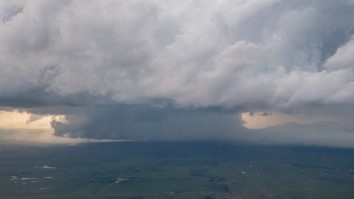
Image: by Dan Stechman, OU CIMMS/NOAA NSSL
Improved Flash Flood Tools Aim to Increase Public Safety
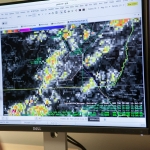
Flash Flood Tools
Researchers from OU and the National Oceanic and Atmospheric Administration’s National Severe Storms Laboratory are improving current software to enhance guidance for the categorization of flash flood warnings to increase public response and public safety.
Tracking Weather As It Happens
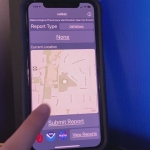
mPING App
OU and NOAA have developed a free smartphone app called mPING (Meteorological Phenomena Identification Near the Ground) to collect public weather reports. This data will help scientists compare these citizen scientists' field reports to radar detections in order to improve and develop new forecasting technologies.
$7.4 Million U.S. Navy Grant to Make OU Home to the Nation’s Largest University-Based Near-Field Scanner for Antenna Measurements
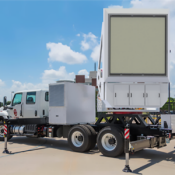
A $7.4 million grant awarded from the United States Office of Naval Research to the University of Oklahoma will fund the development of a scanner and innovative digital radar solutions to support research, prototyping and testing of advanced digital radar concepts for the Navy and the U.S. Department of Defense. The project will also make OU home to the largest university-based scanner for near-field measurements in the nation.
Drones Support OU Weather Research
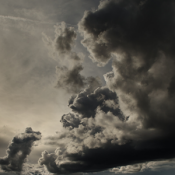
Researchers from the University of Oklahoma and the University of Colorado at Boulder are taking part in a study using drones to study how storms form in coastal urban areas, data that will help improve computer models for weather forecasting and improve meteorologists’ understanding of the processes that lead to storm formation.
OU Researchers Conduct First Drone-Based Weather Observations At Max Westheimer Airport
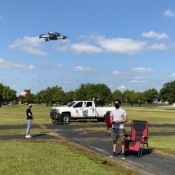
CASS at Max Westheimer Airport
Everyone has been impacted by unexpected weather events at some point in their life with consequences ranging from being mildly inconvenienced to experiencing life threatening conditions. One community that is particularly susceptible to the weather is aviation. There has been an on-going effort to improve weather awareness for aviators with an emphasis on conditions at airports. Supported in part through funding from NASA, the OU Center for Autonomous Sensing and Sampling is working with individuals at the OU Max Westheimer Airport to conduct novel observations of the atmosphere using state-of-the-art Unmanned Aircraft Systems, or drones. Resulting measurements can be used to improve numerical weather prediction model forecasts or communicated directly to pilots to help keep them apprised of current weather conditions.
OU and NOAA Team Up to Provide Radar Coverage During Hurricane Delta
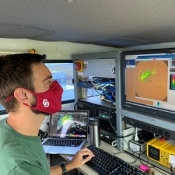
Addison Alford operates the radar
As Hurricane Delta lumbers toward the Central Louisiana coast, the University of Oklahoma’s Shared Mobile Atmospheric Research and Teaching radar team, in collaboration with National Oceanic and Atmospheric Administration’s National Weather Service, is deploying a mobile weather radar to the area around Lake Charles, Louisiana.
How Do Weather Forecasters Communicate Risk Before, During, and After Extreme Weather Events?
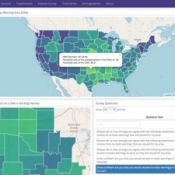
NOAA's Hazardous Weather Testbed
Researchers at the University of Oklahoma’s National Institute for Risk and Resilience, Cooperative Institute for Mesoscale Meteorological Studies, and the National Severe Storms Lab recently conducted a transdisciplinary experiment exploring the effect of social and behavioral data on how weather forecasters communicate risk before, during, and after extreme weather events.
OU Researchers Collect Data From Hurricane Sally
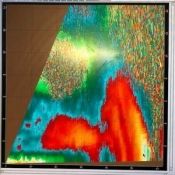
Hurricane Sally radar image
University of Oklahoma scientists led by Michael Biggerstaff, OU School of Meteorology professor, deployed a Shared Mobile Atmospheric Research and Teaching (SMART) weather radar south of Mobile, Alabama, in advance of the landfall of Hurricane Sally. There they measured the structure of the winds in the hurricane boundary layer, the lowest mile of air above the ground.
Improving Understanding of Climate Change Through Cloud Formation
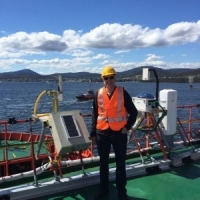
Greg McFarquhar, Director of CIMMS
Greg McFarquhar, the director of the Cooperative Institute for Mesoscale Meteorological Studies and a professor in the School of Meteorology at the University of Oklahoma, will lead a three-year project funded by a $689,082 grant from the Department of Energy. The project uses unique sets of data collected in polar regions that give information on the small-scale properties of aerosols and clouds, data that will provide better insight into weather prediction models.
OU Researchers Travel to the Gulf of Mexico to Intercept Hurricane Laura
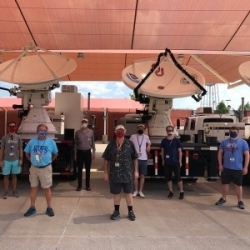
OU & NOAA Researchers
A team of research scientists from the University of Oklahoma and the National Oceanic and Atmospheric Administration National Severe Storms Laboratory have traveled to Texas near the Gulf of Mexico to collect data during the landfall of Hurricane Laura.
The data collected will allow for a better understanding of hurricane winds and the damage they cause. This knowledge will aid in the development of cost-effective building codes to lessen future damage, provide more data to improve other infrastructure, and increase storm resilience.
OU and OSU Take Off to Support Atmospheric Research
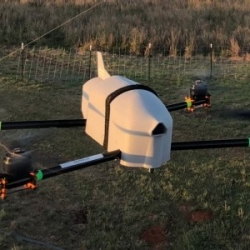
CASS quadcopter drone
During August 2020, teams from the University of Oklahoma (OU) Center for Autonomous Sensing and Sampling (CASS) and the Oklahoma State University (OSU) Unmanned Systems Research Institute (USRI) joined forces at OU’s Kessler Atmospheric and Ecological Field Station (KAEFS) to conduct innovative atmospheric research using unmanned aircraft systems (UAS) or drones, which could lead to improved weather forecasts. Both the OU and OSU teams are developing and testing state-of-the-art UAS, instrumented with meteorological sensors designed to collect precision atmospheric data in the Earth’s lower atmosphere, which can be ingested by weather forecast models. Despite the challenges of COVID-19, the scientists and engineers from CASS and USRI were able to maintain safe practices and socially distance as they worked to together to push the envelope of UAS atmospheric research.
New OU Research Could Inform Understanding of Storm Formation
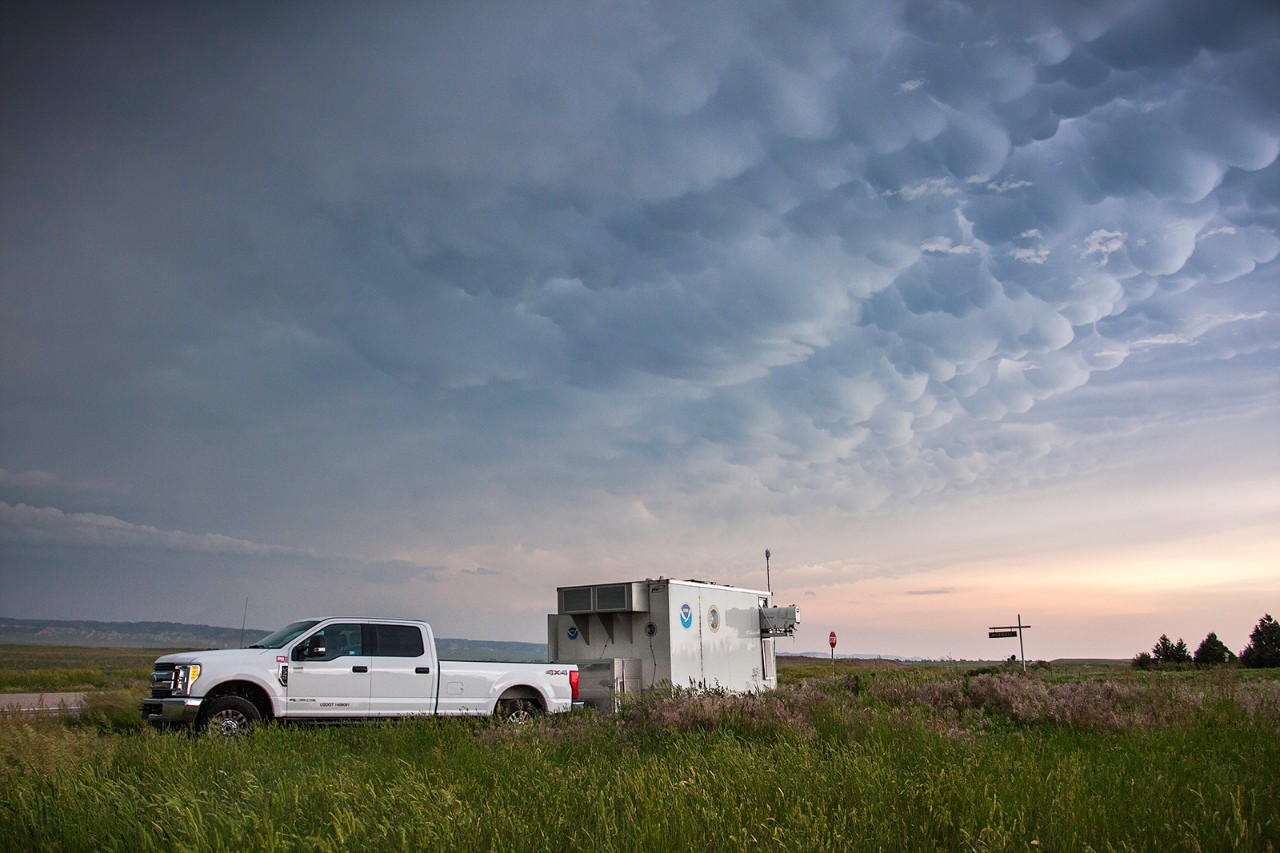
The CLAMPS trailer deployed on June 12, 2017 in SE Wyoming and SW Nebraska. (Photo by Brandon Smith, OU CIMMS)
August 7, 2020
A study led by researchers from the University of Oklahoma aims to improve scientists’ understanding of how storms develop in densely populated coastal regions.
Petra Klein, professor in the School of Meteorology and executive associate dean in the College of Atmospheric and Geographic Sciences, leads the project team that includes scientists from the University of Wisconsin and two National Oceanic and Atmospheric Administration laboratories located in Norman, Oklahoma, and Boulder, Colorado.
“As part of the Coastal Urban Boundary-layer Interactions with Convection proposal, we will collect comprehensive datasets documenting the environment in the lowest layer of the atmosphere, or the boundary layer, where clouds initiate, grow and decay,” Klein said. “Three unique profiling systems will be deployed and continuously operated for four months in the larger Houston area. We hypothesize that the interactions between sea-breezes and urban wind circulations affect the transport and mixing of aerosols (tiny particles that contribute to cloud formation) in the boundary layer.”
Klein adds that the resulting knowledge gained from the CUBIC project will provide critical insight into the processes that lead to the development of storms in densely populated coastal regions.
Funded by the U.S. Department of Energy as one of 31 new projects in atmospheric sciences aimed at improving the power of Earth system models to predict weather and climate, this research dives deeply into the nuances of cloud formation.
“Atmospheric processes leading to cloud formation and precipitation are notoriously complex and difficult to model accurately,” said Chris Fall, director of the DOE’s Office of Science, in a news release. “These studies, which combine observation and modeling, will be important steps toward more precise and predictive models on both regional and global scales.”
Projects were chosen by competitive peer review under the DOE Funding Opportunity Announcement, under the Atmospheric System Research Program (PDF), sponsored by the Office of Biological and Environmental Research, within the department’s Office of Science.
Berrien Moore, dean of the College of Atmospheric and Geographic Sciences and the director of the National Weather Center, said, “we are so very proud of this major DOE award received by Professor Petra Klein and a team of NOAA and university scientists to explore linkages between our planet’s atmospheric boundary layer with convection processes. Understanding better such linkages is central to improving the power of Earth system models to predict weather and climate. As such, we will all benefit from the cutting-edge work of this exciting project.”
NWC REU Program Goes Virtual For First Time
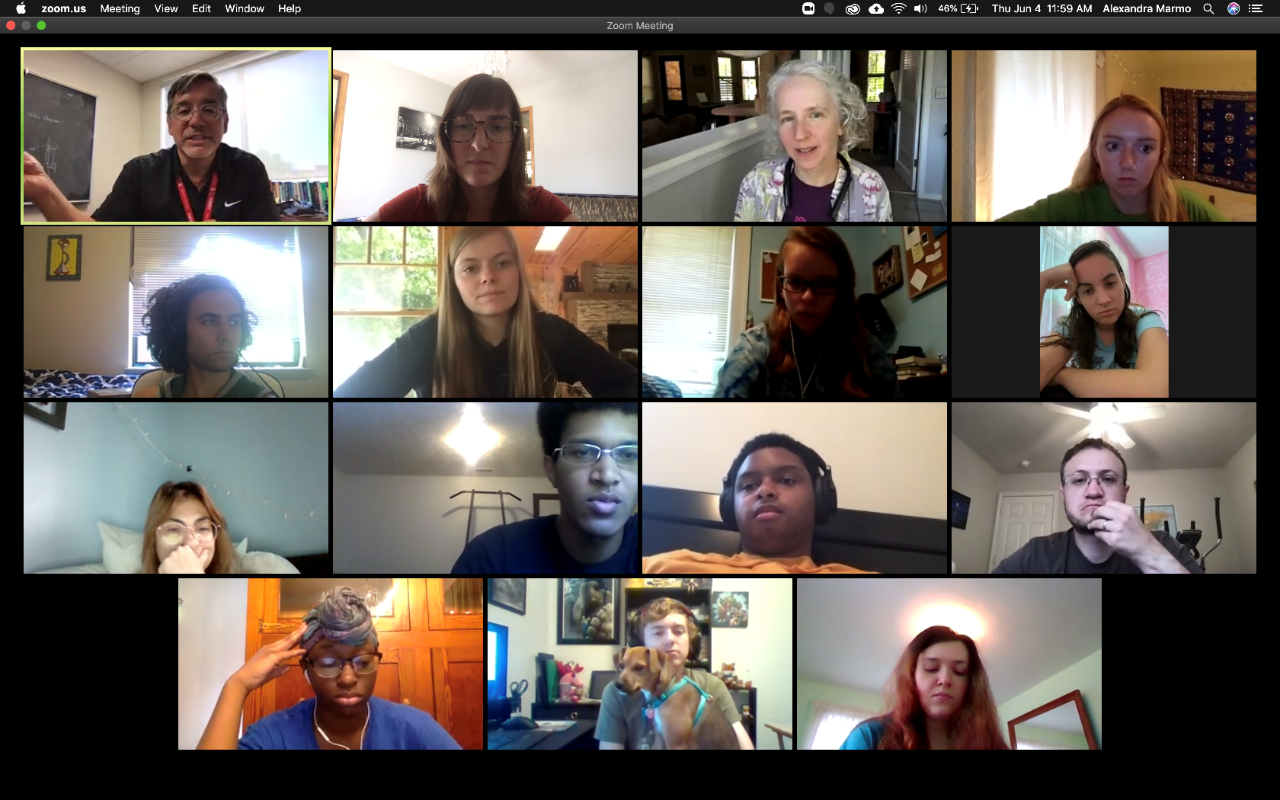
The 2020 participants of the NWC REU program attend a virtual tour of the Radar Innovations Laboratory hosted by Dr. Robert Palmer via Zoom.
July 1, 2020
The NWC REU program, which is funded through grants from the National Science Foundation, gives students at universities across the country the opportunity to collaborate with mentors in their field of study. Organized by CAPS, the program is headed by Dr. Daphne LaDue and her research assistant, Alex Marmo. Program mentors come from the Norman weather and climate community, and are partnered with REU students based on research interests. Alex had the following to say about this year's program:
The virtual 2020 NWC REU has definitely been different, although this years mentors and participants have been enthusiastic with the continuation of our program. We have put together virtual tours and seminars that have given us the opportunity to talk to even more people across various organizations! The program is at its halfway mark and the students are well into their research projects. They are all facing challenges working remotely, but they are grateful to be able to participate. The students gave their practice talks this week in preparation of final presentations that will be held July 21-24. It was so nice to see their progress with their projects and the confidence they've built working in the research environment.
Below is a list of this years REU participants and mentors along with their research projects:

